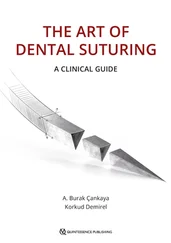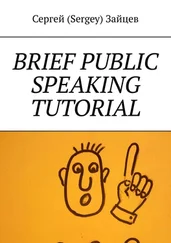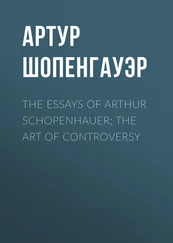J. BERG ESENWEIN DALE CARNAGEY
THE ART OF PUBLIC SPEAKING
Dieses ebook wurde erstellt bei

Inhaltsverzeichnis
Titel J. BERG ESENWEIN DALE CARNAGEY THE ART OF PUBLIC SPEAKING Dieses ebook wurde erstellt bei
A FOREWORD
THE ART OF PUBLIC SPEAKING
ACQUIRING CONFIDENCE BEFORE AN AUDIENCE
Assume Mastery Over Your Audience_
QUESTIONS AND EXERCISES.
THE SIN OF MONOTONY
QUESTIONS AND EXERCISES.
EFFICIENCY THROUGH EMPHASIS AND SUBORDINATION
QUESTIONS AND EXERCISES.
EFFICIENCY THROUGH CHANGE OF PITCH
QUESTIONS AND EXERCISES
EFFICIENCY THROUGH CHANGE OF PACE
QUESTIONS AND EXERCISES
QUESTIONS AND EXERCISES
PAUSE AND POWER
QUESTIONS AND EXERCISES
EFFICIENCY THROUGH INFLECTION
--WILLIAM COWPER, _The Task_.
QUESTIONS AND EXERCISES
CONCENTRATION IN DELIVERY
QUESTIONS AND EXERCISES
FORCE
QUESTIONS AND EXERCISES
FEELING AND ENTHUSIASM
QUESTIONS AND EXERCISES
FLUENCY THROUGH PREPARATION
QUESTIONS AND EXERCISES
THE VOICE
QUESTIONS AND EXERCISES
VOICE CHARM
QUESTIONS AND EXERCISES
QUESTIONS AND EXERCISES
THE TRUTH ABOUT GESTURE
QUESTIONS AND EXERCISES
METHODS OF DELIVERY
QUESTIONS AND EXERCISES
THOUGHT AND RESERVE POWER
The Thinking Mind_
QUESTIONS AND EXERCISES
SUBJECT AND PREPARATION
QUESTIONS AND EXERCISES
INFLUENCING BY EXPOSITION
QUESTIONS AND EXERCISES
INFLUENCING BY DESCRIPTION
SELECTIONS FOR PRACTISE
QUESTIONS AND ANSWERS
INFLUENCING BY NARRATION
QUESTIONS AND EXERCISES
INFLUENCING BY SUGGESTION
QUESTIONS AND EXERCISES
INFLUENCING BY ARGUMENT
QUESTIONS AND EXERCISES
INFLUENCING BY PERSUASION
QUESTIONS AND EXERCISES
INFLUENCING THE CROWD
RIDING THE WINGED HORSE
QUESTIONS AND EXERCISES
GROWING A VOCABULARY
QUESTIONS AND EXERCISES
RIGHT THINKING AND PERSONALITY
QUESTIONS AND EXERCISES
AFTER-DINNER AND OTHER OCCASIONAL SPEAKING
QUESTIONS AND EXERCISES
MAKING CONVERSATION EFFECTIVE
QUESTIONS AND EXERCISES
APPENDICES FIFTY QUESTIONS FOR DEBATE
THIRTY THEMES FOR SPEECHES
SUGGESTIVE SUBJECTS FOR SPEECHES[36]
SPEECHES FOR STUDY AND PRACTISE
THE NEW AMERICANISM
THE CALL TO DEMOCRATS
LAST SPEECH
EULOGY OF WEBSTER
Impressum neobooks
The Art of Public Speaking
J. BERG ESENWEIN
AUTHOR OF
"HOW TO ATTRACT AND HOLD AN AUDIENCE,"
"WRITING THE SHORT-STORY,"
"WRITING THE PHOTOPLAY," ETC., ETC.,
AND
DALE CARNAGEY
PROFESSOR OF PUBLIC SPEAKING, BALTIMORE SCHOOL OF COMMERCE AND
FINANCE; INSTRUCTOR IN PUBLIC SPEAKING, Y.M.C.A. SCHOOLS, NEW
YORK, BROOKLYN, BALTIMORE, AND PHILADELPHIA, AND THE NEW YORK
CITY CHAPTER, AMERICAN INSTITUTE OF BANKING
=Things to Think of First=
The efficiency of a book is like that of a man, in one important
respect: its attitude toward its subject is the first source of its
power. A book may be full of good ideas well expressed, but if its
writer views his subject from the wrong angle even his excellent advice
may prove to be ineffective.
This book stands or falls by its authors' attitude toward its subject.
If the best way to teach oneself or others to speak effectively in
public is to fill the mind with rules, and to set up fixed standards for
the interpretation of thought, the utterance of language, the making of
gestures, and all the rest, then this book will be limited in value to
such stray ideas throughout its pages as may prove helpful to the
reader--as an effort to enforce a group of principles it must be
reckoned a failure, because it is then untrue.
It is of some importance, therefore, to those who take up this volume
with open mind that they should see clearly at the out-start what is the
thought that at once underlies and is builded through this structure. In
plain words it is this:
Training in public speaking is not a matter of externals--primarily; it
is not a matter of imitation--fundamentally; it is not a matter of
conformity to standards--at all. Public speaking is public utterance,
public issuance, of the man himself; therefore the first thing both in
time and in importance is that the man should be and think and feel
things that are worthy of being given forth. Unless there be something
of value within, no tricks of training can ever make of the talker
anything more than a machine--albeit a highly perfected machine--for the
delivery of other men's goods. So self-development is fundamental in our
plan.
The second principle lies close to the first: The man must enthrone his
will to rule over his thought, his feelings, and all his physical
powers, so that the outer self may give perfect, unhampered expression
to the inner. It is futile, we assert, to lay down systems of rules for
voice culture, intonation, gesture, and what not, unless these two
principles of having something to say and making the will sovereign have
at least begun to make themselves felt in the life.
The third principle will, we surmise, arouse no dispute: No one can
learn _how_ to speak who does not first speak as best he can. That may
seem like a vicious circle in statement, but it will bear examination.
Many teachers have begun with the _how_. Vain effort! It is an ancient
truism that we learn to do by doing. The first thing for the beginner in
public speaking is to speak--not to study voice and gesture and the
rest. Once he has spoken he can improve himself by self-observation or
according to the criticisms of those who hear.
But how shall he be able to criticise himself? Simply by finding out
three things: What are the qualities which by common consent go to make
up an effective speaker; by what means at least some of these qualities
may be acquired; and what wrong habits of speech in himself work against
his acquiring and using the qualities which he finds to be good.
Experience, then, is not only the best teacher, but the first and the
last. But experience must be a dual thing--the experience of others must
be used to supplement, correct and justify our own experience; in this
way we shall become our own best critics only after we have trained
ourselves in self-knowledge, the knowledge of what other minds think,
and in the ability to judge ourselves by the standards we have come to
believe are right. "If I ought," said Kant, "I can."
An examination of the contents of this volume will show how consistently
these articles of faith have been declared, expounded, and illustrated.
The student is urged to begin to speak at once of what he knows. Then he
is given simple suggestions for self-control, with gradually increasing
emphasis upon the power of the inner man over the outer. Next, the way
to the rich storehouses of material is pointed out. And finally, all the
while he is urged to speak, _speak_, _SPEAK_ as he is applying to his own
methods, in his own _personal_ way, the principles he has gathered from
his own experience and observation and the recorded experiences of
others.
So now at the very first let it be as clear as light that methods are
secondary matters; that the full mind, the warm heart, the dominant will
Читать дальше













